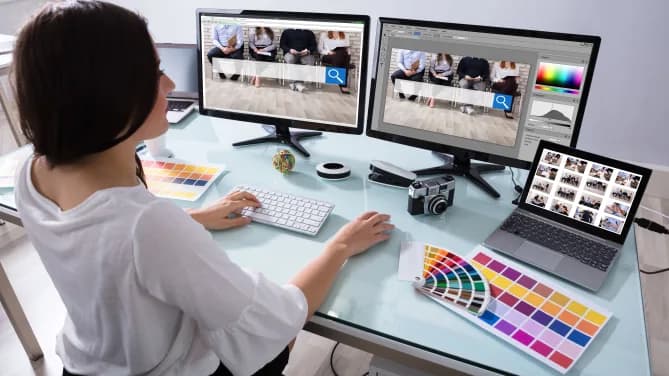This is What a Good Graphic Design Resume Looks Like
Pursuing a job as a graphic designer? Regardless of the type of position — full-time, part-time, seasonal, temporary — a fine-tuned resume is key to your securing it. And acting on the following information will help ensure that your graphic design resume is as flawless as you can make it.
What to include on a graphic design resume.
Education.
Your prospective employer will want to know what you learned and from where. This doesn’t have to be a college degree either. A certificate program is better than nothing. Nor does the education exhibited in this section have to pertain to graphic design. If you majored in history, don’t hesitate to say so. This section is simply one of the ways employers get to learn of your background, gain insight into your (at least previous) interests, confirm that you're willing and able to learn and that you can complete something that requires substantial time and effort.
Experience
More so than the education section, the experience section of a graphic design resume is thoroughly examined. This section is where you can highlight past graphic design experience you have that is relevant to the position you are now applying for. So be sure to include as much relevant experience as you have. And don’t worry about consistency with your educational background. A person who got their B.A. in history yet freelanced as a graphic designer throughout college and volunteered their service to their church or a local non-profit amidst a full-time teaching job, for example, is a better candidate than the person who got their degree in graphic design but has yet to gain real-world experience in the field.
Skills
This section of your graphic design resume should complement the prior two. List whatever skills gained through both your education and work experience that you believe to be relevant to the position for which you’re applying. Furthermore, list any skills you possess and just haven’t had the opportunity to exhibit that you believe to be pertinent to the position. For example, if you recently taught yourself how to use a new design program, include that!
Summary
An optional part of the resume, the summary is your opportunity to give your prospective employer a little more insight as to who you are. While the rest of the resume is simply facts, in this brief sentence or two you are able to add more flavor, helping color an otherwise black and white picture. Be sure that your summary remains relevant to the position your applying for. Tell prospective employers why they should hire you.
How to format a graphic design resume.
A standard-looking, text-only resume isn’t going to cut it here. This is a graphic-design resume. So design it graphically! (And don’t just use a template, or a pre-made infographic resume. Your prospective employer will notice.) The hiring managers will be analyzing your use of color, typography and other visual elements with a keen eye. This is your chance to show off both your personality and graphic-design capabilities to your prospective employer. How you design your resume is how you are marketing yourself to your potential colleagues.
Make sure that you don’t go overboard with your design, however. This may go without saying, but take care to use color in such a way that enhances the content and readability of your graphic design resume instead of detracting from it. Readability is the most important thing here. So, if your design is such that it makes reading the content of your resume more difficult, you shouldn’t hesitate to adjust it.
What employers are looking for.
Employers aren’t just looking for how well you can use color. Rather, they are looking at the attention to detail you exhibit, the creativity you display and the way you present yourself on paper. And they want those who are the best at each of these things.
With this in mind, make sure you utilize spell check to verify that you don’t have a single spelling mistake anywhere on your graphic design resume. Ensure that the creativity you display is truly you and not just what is “hot” at the time. And make that every part of the resume is truly you. If you don’t like how something is worded or feel weird about how an image looks, change it. Don’t send off your graphic design resume until you yourself are at peace with it. After all, your graphic design resume is a representation of you and you alone.
Example of graphic design resumes.
Photo Credit: Sarah Catanzariti
Photo Credit: Rianti Hidayat Wong
Photo Credit: Stuart Mayhew
Don’t miss out on articles like these. Sign up!
Why women love us:
- Daily articles on career topics
- Jobs at companies dedicated to hiring more women
- Advice and support from an authentic community
- Events that help you level up in your career
- Free membership, always
